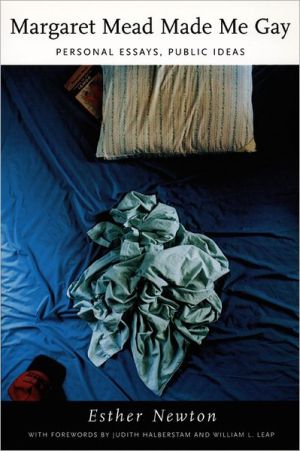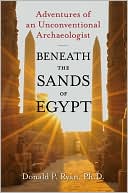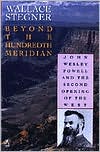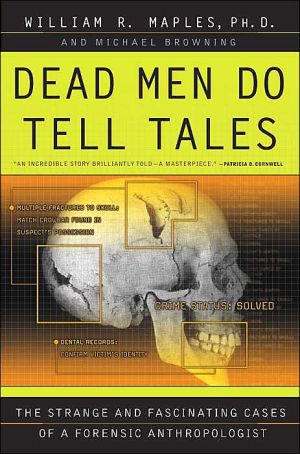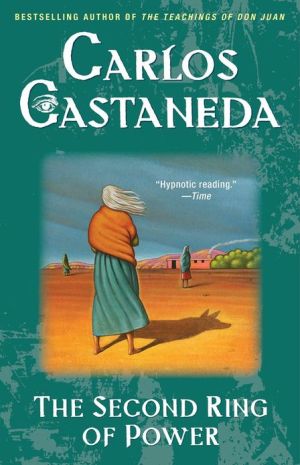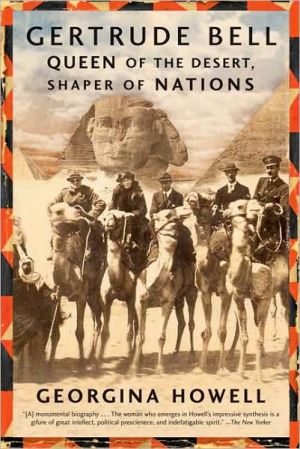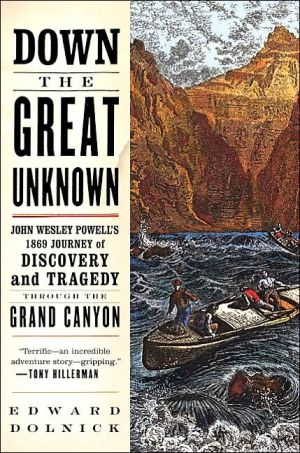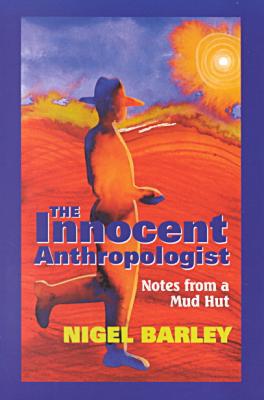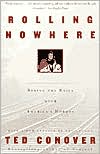Margaret Mead Made Me Gay: Personal Essays, Public Ideas
Margaret Mead Made Me Gay is the intellectual autobiography of cultural anthropologist Esther Newton, a pioneer in gay and lesbian studies. Chronicling the development of her ideas from the excitement of early feminism in the 1960s to friendly critiques of queer theory in the 1990s, this collection covers a range of topics such as why we need more precise sexual vocabularies, why there have been fewer women doing drag than men, and how academia can make itself more hospitable to queers. It...
Search in google:
A collection of essays by a pioneering queer anthropologist. Bradley Winterton, South China Morning Post - Bradley Winterton This new book contains all [Newton s] shorter work in a single, knockout volume.
\ \ \ \ \ Chapter One\ \ \ From the Appendix to Mother Camp:\ Field Methods\ 1972\ \ \ The research for this book was traditional anthropological fieldwork, with certain qualifications imposed by time, resources, and the special constitution of the "community" under study. There is to date no full ethnography of the homosexual community, much less of the drag world, so that from the beginning I was "flying blind." Moreover, very few ethnographies (except for the early community studies) have been attempted in America, so that my model of fieldwork procedure was largely based on non-urban precedents.\ A female impersonator show or "drag show" generally consists of a number of short acts or routines performed sequentially by the same or different performers. The shows often open and close with routines by all the performers together, called production numbers. The number of performers in the cast of a particular show can range from one to twenty-six (this was the largest cast I ever saw, although in theory a cast could be larger), but the majority of drag shows have casts of about five or six. The shows take place in bars, nightclubs, and theaters for paying audiences, and last about an hour each. Performers generally do three shows an evening.\ The first drag show I saw was in a small bar on Chicago's Near North Side. I did not understand about half of the performance, and my reaction was one of mingled shock and fascination. Theaudience clearly found the performance exceedingly funny. Never having seen a man dressed in full female attire before, I was astounded to find performer and audience joined through laughter in the commission and witnessing of a taboo act. At the same time I was struck by the effectiveness of the impersonation, by the highly charged nature of the symbol being presented dramatically, and by the intensely familiar interaction between the performer and the audience. The closest analogue I had seen was a Negro Gospel show in Chicago, in which the performers came down off the stage and mingled with the audience in a "laying-on of hands," and members of the audience "got the spirit." On the basis of that observation I hypothesized that I had witnessed a "cultural performance" (Singer 1955) and decided to attempt to analyze it in much the same way that Keil (1966) had analyzed the blues show in relation to Negro audiences.\ At this early stage the practical problem was to see more drag shows and to establish contact with a female impersonator to see if the study was feasible. At that time (August-September 1965) there were five drag shows in Chicago, and I very shortly got around to see four of them. This convinced me that drag shows did indeed follow predictable conventions that indicated ritual or cultural performance. At the same time, I approached a female impersonator between shows in the bar in which he was working. I explained that I was an anthropologist at the University of Chicago and that I would like to interview him. I stated that I was impressed with his performance and with the enthusiasm of the audience and that I wanted to question him about the profession of female impersonation. To my amazement, he replied that he had majored in anthropology in college and that he would willingly talk to me. Thereafter I interviewed this man seven times, at first in the bar and later at his home with a tape recorder. He turned out to be my entrée into the drag world and my best informant. He was a highly articulate, intelligent man who from the first was at least as dedicated to the study as I was. He had been performing professionally for about twelve years in several different parts of the country, and he knew the history and structure of the profession.\ Between August and November 1965, I interviewed four other female impersonators in their apartments. These interviews were set up for me by my original informant. In addition, I spent many evenings "hanging around" Chicago drag bars, seeing shows, and getting to know performers and audiences. The problem at this stage was getting impersonators to talk to me at all. Above all they did not wish to be confronted by an unsympathetic person who would ask insensitive questions or show a condescending attitude. The fact that most of them did not really know what an anthropologist was was helpful in avoiding preconceived hostility. But it is doubtful that they would have consented to talk to me without the enthusiastic endorsement of my original informant, who was a respected figure in the group. Second, in speaking with the potential informant to set up the interview, I made it plain that I had some familiarity with drag (that I was "wise," in Goffman's terminology) and that I was not interested in psychological problems.\ I continued to find the taped interview a very useful tool throughout the fieldwork. However, it was not possible to interview many impersonators in this way.\ Such interviews were done only with the "stage" impersonators who were verbally oriented and articulate and who felt relatively comfortable with the interview situation. All in all, I interviewed ten of them: six in Chicago, three in New York City, and one in Kansas City. All were interviewed in two-hour or longer sessions from one to seven times in their own apartments. But my tentative attempts to interview "street" impersonators convinced me immediately that this would not be a useful approach with them. Many of them perceived me as a complete outsider and were appalled at the idea of spending several hours alone with me. In addition, their apartments were too chaotic to permit the requisite privacy and concentration. Even given good will, they were unwilling or unable to respond thoughtfully to sustained verbal interaction, Some more informal approach was called for, and I needed a chance to observe interaction rather than to ask questions about it.\ These problems were solved when my original informant left Chicago to take a job in Kansas City. He suggested that I come to Kansas City and that in his capacity as "boss" of the show, he would give me admittance to the backstage, where I could meet the performers on a more sustained and less formal basis and could actually observe them in their natural habitat. Accordingly, between December 1965 and December 1966 I made three trips to Kansas City. The first two times (December 1965 and August 1966), I stayed about a month each; the third time I stayed one week. Once the performers had accepted me as a fixture backstage and rapport had been established, I proceeded more or less as a fieldworker might. I lived in two different cheap hotels where performers lived. I spent time during the day with impersonators, both singly and in groups, and participated in their activities, including parties and outings. Most important, I spent every night in the two bars where the impersonators worked, either backstage, watching the show, or talking to the bar personnel and generally observing the bar life. I considered my own role to include a great deal of participation that would have been difficult to avoid in any case. I not only listened and questioned, I also answered questions and argued. I helped out with the shows whenever I could, pulling curtains, running messages for the performers, and bringing in drinks and french fries from the restaurant across the street. When the performers half jokingly suggested I should stand in for an absent stripper, however, I drew the line.\ There is no reason, in theory, why a fieldworker actually could not have stayed in Kansas City (or any city in which rapport has been established) for a full year, and in this way approximate conventional fieldwork. The ethnography of such a small and specialized group as female impersonators did not seem to demand such a commitment. However, ethnography of the homosexual community in even one city, or of the various "street" groups, would certainly require such an effort.
FOREWORD The Butch Anthropologist Out in the Field Judith Halberstam,ix FOREWORD On Being Different: An Appreciation William L. Leap,xix ACKNOWLEDGMENTS,xxiii INTRODUCTION,1 PART I: DRAG AND CAMP From the Appendix to Mother Camp, Field Methods (1972),11 Role Models (1972),14 Preface to the Phoenix Edition of Mother Camp (1979),30 Theater: Gay Anti-Church—More Notes on Camp (1992/1999),34 Dick(less) Tracy and the Homecoming Queen: Lesbian Power and Representation in Gay Male Cherry Grove (1996),63 PART II: LESBIAN-FEMINISM High School Crack-up (1973),93 Marginal Woman/Marginal Academic (1973),103 The Personal Is Political: Consciousness Raising and Personal Change in the Women's Liberation Movement (with113 Excerpt from Womenfriends (with Shirley Walton; 1976),142 Will the Real Lesbian Community Please Stand Up? (1982/1998),155 PART III: BUTCH The Misunderstanding: Toward a More Precise Sexual Vocabulary (with Shirley Walton; 1984),167 The Mythic Mannish Lesbian:Radclyffe Hall and the New Woman (1984),176 Beyond Freud, Ken, and Barbie (1986),189 My Butch Career: A Memoir (1996),195 PART IV: QUEER ANTHROPOLOGY DMS: The Outsider's Insider (1995),215 Too Queer for College: Notes on Homophobia (1987),219 An Open Letter to "Manda Cesara" (1984),225 Of Yams, Grinders, and Gays: The Anthropology of Homosexuality (1988),229 Lesbian and Gay Issues in Anthropology: Some Remarks to the Chairs of Anthropology Departments (1993),238 My Best Informant's Dress: The Erotic Equation in Fieldwork (1992),243 NOTES,259 BIBLIOGRAPHY,293 INDEX,311
\ Heather Findlay“Mead features fascinating diary entries chronicling Newton’s youthful realization she was gay. And if Newton’s book is academic, this is dream homework. . . . Newton brings a sense of urgency and easy eloquence to a discussion of the disciplinary problems she faces as an anthropologist.”\ —Heather Findlay, Girlfriends\ \ \ \ \ Front PageNewton, one of the queer community’s most distinguished scholars and thinkers, has gathered together a wonderful collection of her writings from the past 30 years, fashioning them into an intellectual autobiography.\ \ \ Aaron Hamburger“Courage and defiance are . . . qualities that mark Newton’s life and writing.”\ —Aaron Hamburger, New York Blade\ \ \ \ \ Bradley Winterton“This new book contains all [Newton’s] shorter work in a single, knockout volume.”\ —Bradley Winterton, South China Morning Post\ \ \ \ \ Heather Joslyn“Newton takes the reader along as she forges a career; she began studying female impersonators in the mid-’60s, when no one else was, resulting in the book Mother Camp (1972). Margaret Mead Made Me Gay contains enough of that work to make a strong case for Newton as a pioneer of queer studies. It also includes the terrific, previously unpublished 1990s essay ‘Theater: Gay Anti-Church’ which freshly explores the cliché of stage-loving gays.”\ —Heather Joslyn, City Paper (Baltimore)\ \ \ \ \ Michael Schwartz“[A] collection of highly readable, aways provocative essays.”\ —Michael Schwartz, The Gay and Lesbian Review\ \ \ \ \ B. Medicine“[G]roundbreaking. . . . Newton has contributed a brilliant collection that will enrich and promote the field of gender studies.”\ —B. Medicine, Choice\ \ \ \ \ Publishers WeeklyThe wonderful title of this collection refers to the moment when Newton--a college student ashamed of her feelings for other women--read Coming of Age in Samoa and realized that various cultures have differing ideas of what constitutes "normal" sexuality. It seems only fitting, then, that Newton (Cherry Grove, Fire Island), now a professor of anthropology at SUNY Purchase, would become a pioneering scholar in lesbian and gay studies. This collection--an intellectual genealogy of Newton's work from the last 30 years--reveals the prescience and durability of her earliest writings. The selections from her influential 1972 study of drag culture, Mother Camp, make effortless statements about gender presentation as "performance" and "impersonation" that are now staples of contemporary queer theory. In the 1960s, however, she had little professional support from her colleagues ("My topic was widely viewed as an inappropriate dirty joke"). Her newer pieces prove just as stimulating and vital. "Theater: Gay Anti-Church" argues that for gay people, theater serves as an almost religious site of community, iconography and ritual. A chapter from her upcoming autobiography, My Butch Career, shares personal revelations and exposes the formation of young butch identity: "My child body was a strong and capable instrument somehow stuffed into the word `girl.' " This collection will be deservedly popular among devotees of gay and lesbian studies and anthropology. 23 b&w photos. (Jan. 9) Copyright 2000 Cahners Business Information.\ \ \ \ \ Library JournalNewton, an anthropology professor at SUNY at Purchase and a scholar of lesbian, gay, and transgender studies, credits Margaret Mead as the inspiration for her life's work. Reading Mead's Coming of Age in Samoa as a college senior, Newton made the liberating discovery that there were other ways of living and being in the world beyond what she had known and experienced. Here Newton presents her "intellectual biography" in 20 essays that span her two-decades-long career and are organized into four broad themes: drag and camp, lesbian-feminism, butch, and queer anthropology. Included are some of Newton's best-known pieces ("The Mythic Mannish Lesbian" and "My Best Informant's Dress") as well as a selection of new essays ("Theater: Gay Anti-Church"). The volume includes black-and-white photographs from the author's private collection. Recommended for anthropology and gender collections.--Kimberly L. Clarke, Univ. of Minnesota, Minneapolis Copyright 2000 Cahners Business Information.\ \ \ \ \ Lambda Book ReportAlways thought provoking and interesting, Newton never descends into the dryness of academic writing like many others, which makes it accessible to everyone. \ —Lambda Book Report\ \ \ \ \ From the Publisher“Esther Newton is, quite simply, a pioneering figure in researching contemporary queer populations, as well as one of the most important voices in post WWII anthropology. We are very fortunate to finally have her essays assembled into an accessible collection. This anthology is an indispensable resource for anyone interested in late twentieth-century anthropology, feminism, gay and lesbian studies, gender and sexuality, and the social science of everyday life.”—Gayle Rubin\ “Esther Newton’s work . . . has changed anthropology, feminist studies, and queer studies in remarkable ways. . . . Newton’s methodological innovation has less to do with crafting new empirical tools and more to do with a creative and inspired mode of listening and participating in the cultures she studies.”—from the Foreword by Judith Halberstam\ “I was looking for any way out, some Mad Hatter to lead me down a rabbit hole into a world where I didn't have to carry a clutch purse and want to be dominated by some guy with a crew cut and no neck...So that when I read Coming of Age in Samoa, my senior year in college, I was, to put it mildly, receptive."”—from the Introduction by Esther Newton\ “This is a wonderful collection. Newton is a powerful intellectual whose reflections on her own work not only illuminate her life but also the relation between the academy and the social movements of the last thirty years.”—Elizabeth L. Kennedy, author of Boots of Leather, Slippers of Gold: The History of a Lesbian Community\ \ \
